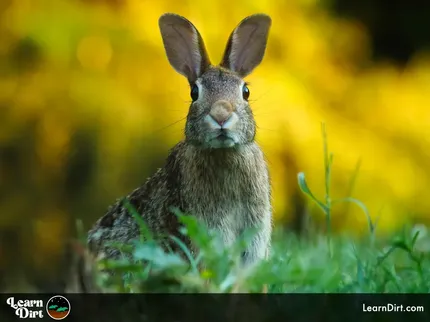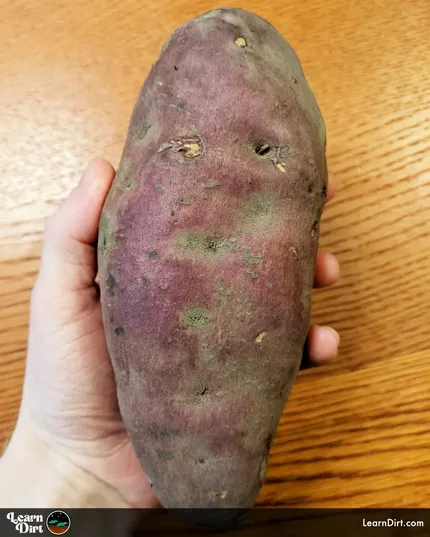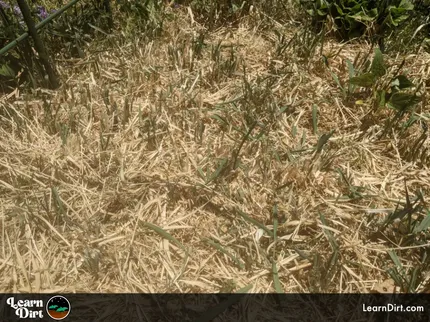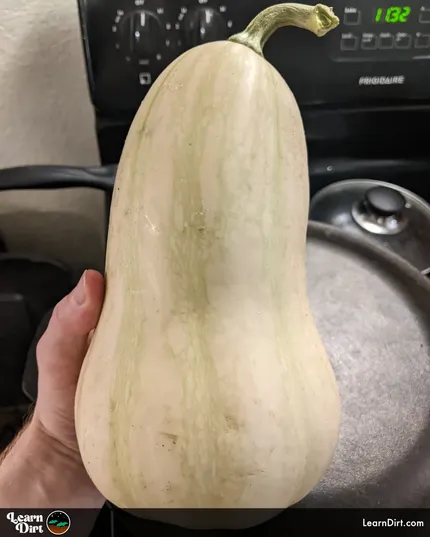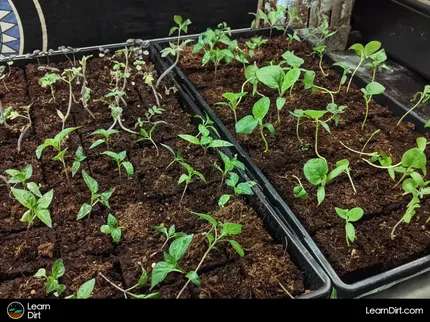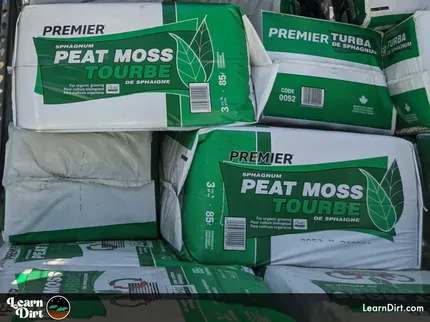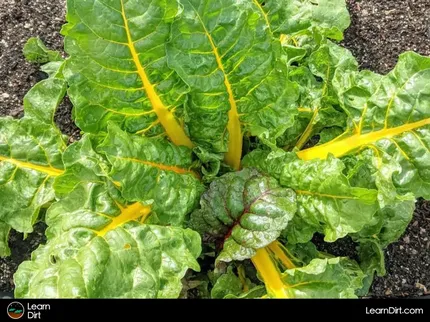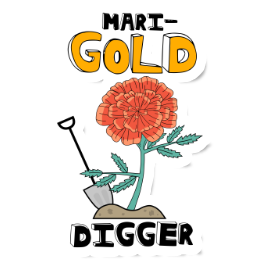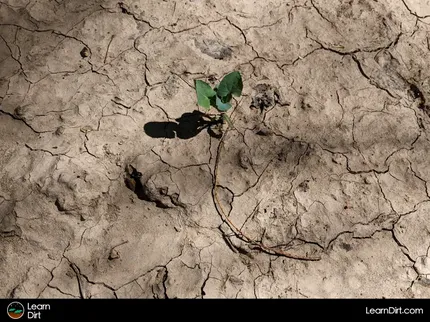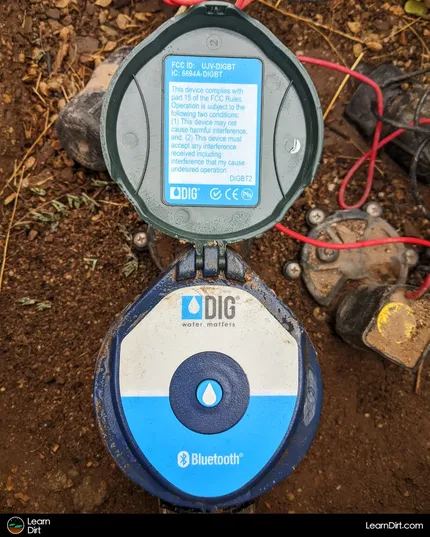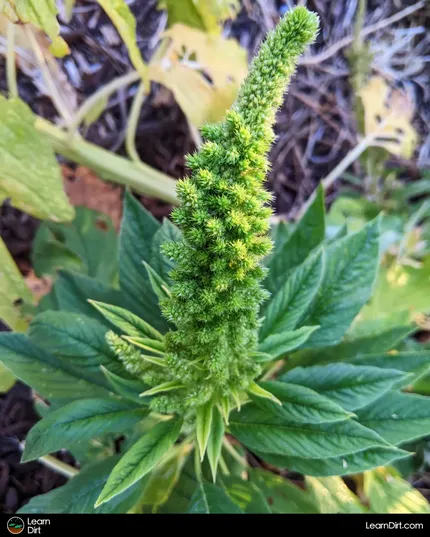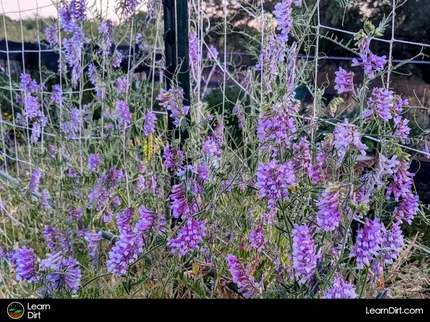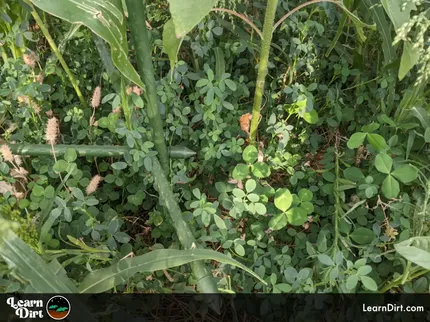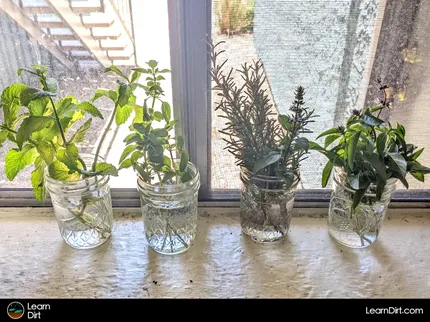Table of Contents
* Our articles never contain AI-generated slop *
What is Hardening Off?
Hardening off is the process of acclimating seedlings or plants to the conditions which they're going to be transplanted into.
This often means becoming accustomed to a harsher environment than where they were started.
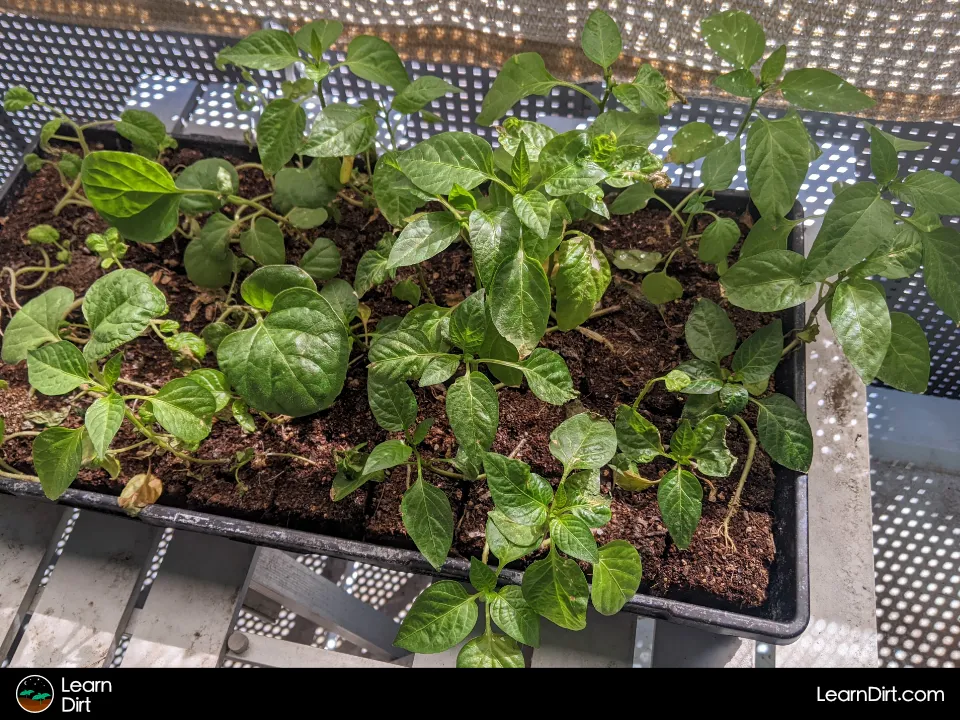
Do You Always Have to Harden off Seedlings?
Not if you don't want success! (just kidding)
Disclaimer: This post may contain affiliate links. Refer to the privacy policy for more information.
In general, hardening off is to help plants to acclimate to the outside conditions when they vary substantially from the indoor conditions.
If the conditions outside are similar to what they've been experiencing indoors, then hardening off wouldn't be necessary. That's not usually the case though, so hardening off is generally a good idea.
Consider how much the outside conditions vary from your indoor conditions, and then give it a try and see if it works for you!
As I'm writing this, I have pepper plants hardening off on my porch.
It was 80F (26.6C) on their seedling rack indoors, and 104F (40C) outside.
The humidity is 40% indoors, and 10% outdoors.
The sun is far brighter than the LED lights they were used too.
And its windy outside.
They need to acclimate to these conditions under shade cloth on the porch for a few hours a day before they'll be tough enough to go out into the field.
The Hardening off Process
Timing
Depending on how much the outdoor conditions vary from what your seedlings are used to, the hardening off process may take more or less time. You'll have to factor this into your seasonal timing.
Join The Grower's Community
Your space to connect, learn, and belong 🌱
Check It Out!
I always add at least 1 week to my seedling calendar to allow for my plants to acclimate to the outdoor conditions.
If you're used to buying seedlings from nurseries or big box stores, these are usually already fairly well-acclimated to the outdoor conditions.
Factor this extra needed time in if you're starting your own seedlings.
Photoperiod
The photoperiod is the amount of dayling / darkness which a plant experiences each day.
Plants are very perceptive of photoperiod, and in some species such as cannabis the photoperiod length is responsible for triggering flowering.
While indoor seedlings rooms often utilize 16 or 18 hours of light each day in order to maximize growth rate, this is likely not the photoperiod which your seedlings will receive once transplanted out into the garden or field.
To help your plants transition to the conditions they'll soon experience, you may opt to adjust your photoperiod gradually during the hardening off process.
If you have a seedling starting system, you may even start seedlings on a rack under 18 hours of light per day, move them to the next rack which has 16, the next rack which has 14, etc. to help create transitional stages which all your seedlings move through.
Wind
You can imagine that going from practically no air movement at all in a seedling room or greenhouse to the winds your garden or fields might experience during a storm could be quite the shock on a little seedling.
Introducing your seedlings gradually to more wind will help strengthen their stems and push them to stabilize in preparation for being transplanted out.
Pointing a fan at your seedlings is a great way to do this. A fan with multiple speed settings may let you ramp up the wind conditions for seedlings before they go outside.
If you don't have a fan (or even if you do), running your hand across your seedling tops once or twice a day will help encourage them to toughen those stems.
Common Pitfalls
That's all for now, thanks for reading!
If you have any questions, comments, or would like to connect with fellow gardeners, head on over to the forum and post there.

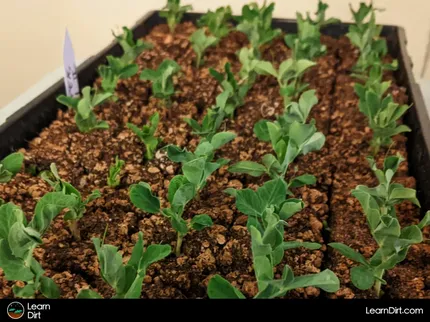
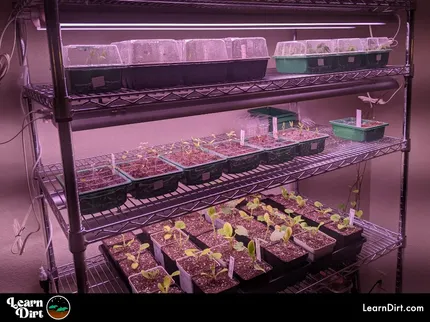
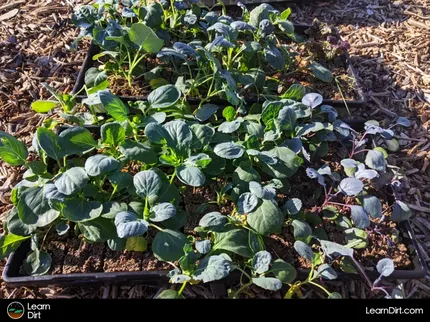
![Don't Till Away Your Carbon [Neon]](/media/product_images/dont-till-away-your-carbon-[neon]_shirt_260x260.png)
![Black Dirt Live Again [Green]](/media/product_images/black-dirt-live-again-[green]_sticker_260x260.png)


